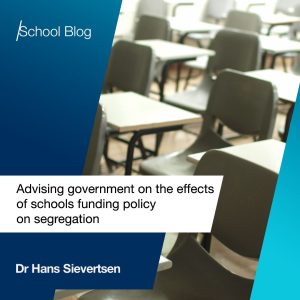 Dr Hans Sievertsen’s research enabled policymakers to look beyond news headlines that reported increased segregation of schools.
Dr Hans Sievertsen’s research enabled policymakers to look beyond news headlines that reported increased segregation of schools.
By Dr Hans Sievertsen
In 2010, Denmark’s newspapers began reporting on a change in how state high schools recruit students. Principals were hand-picking students, journalists reported, with schools becoming more socially and racially segregated.
Were the headlines to be believed? Staff at Denmark’s Ministry for Children and Education were concerned but could not risk making changes to policies based on media anecdotes alone.
To uncover what was really going on in schools, Ministry staff entered into ongoing discussions with experts. Among those they spoke to was Hans Sievertsen, Associate Professor of Economics at the University of Bristol.
A competitive market for state schools in Denmark
Sievertsen had been equally intrigued by the news headlines and eager to understand the true picture. “Where we go to school matters a lot to our future,” he says. “And you can think of good schools as a scarce resource.” As an economist, he is interested in how this resource can be distributed most fairly throughout society.
Together with colleagues in Denmark, he embarked on a study that investigated differences in student composition between state high schools for the period 2003–2011 (published in 2021).
Their results confirmed that schools had become more segregated. Specifically, students had become more concentrated by their academic ability – a pattern that became more pronounced in 2007. And the reason was a big change that year to how high schools were funded.
Click here to read the complete article.
See more from Dr Hans Sievertsen including recent publications.
Discover more research from the School of Economics on our website.

